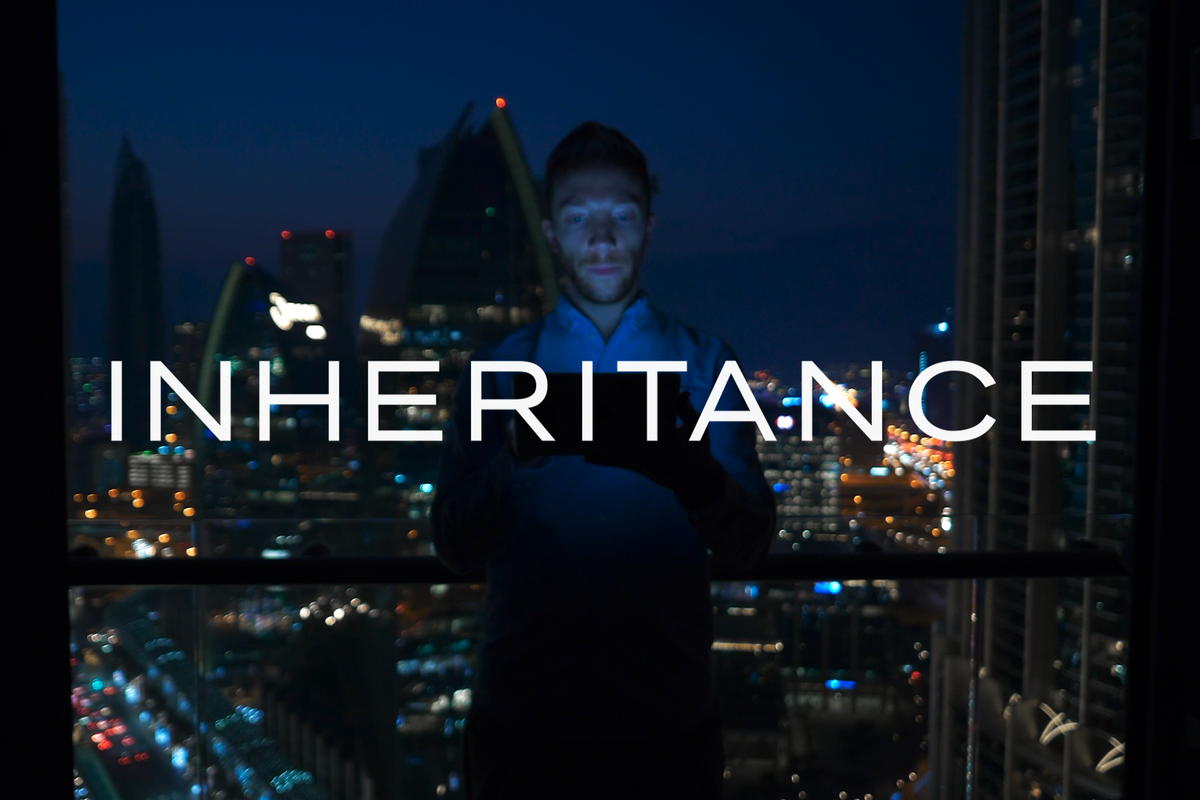Overview
What happens to your Crypto when you die?
Understanding your choices when it comes to inheritance of digital assets
Your estate planning should include any cryptocurrency, NFTs, digital art, and other digital assets that you own. The Vault12 Guard app makes that planning easy, so you can rest assured that your crypto will live on when you die.
"Quite simply, if you don't record all of the details about your assets and communicate them to the people who will be the beneficiaries, those assets will likely be lost forever." -Wasim Ahmad, Chief Crypto Officer at Vault12
What should you know about how to pass on your crypto assets?
If you're at all involved in or curious about investing in digital assets, you've probably wondered "Can digital assets be inherited?" The answer is yes! Vault12's Chief Crypto Officer Wasim Ahmad shares his thoughts about the most important things to know about Web3 asset inheritance and passing on your crypto.
Inheritance: What will happen to your NFTs, digital art, and crypto when you die?
What will happen to your NFTs, digital art, and crypto when you die? You need to understand the fundamentals of inheritance, and how to pass on your Web3 assets to your children or heirs.
How is Crypto Inheritance different from traditional Inheritance?
Hello. My name is Wasim Ahmad, and I'm with Vault12, the pioneering creators of the digital inheritance mobile app Vault12 Guard. Today we're going to talk about inheritance for Web3 assets.
We should carefully consider Web3 inheritance because it is fundamentally different from the relatively straightforward steps for a traditional inheritance. With traditional assets, you go to the bank or the broker, you tell them that someone has passed on or is incapacitated, and then you get access to those assets. But in the Web3 world, as the owner of those assets, you are responsible for the security and safekeeping of those assets.
How can NFT Collectors pass on Web3 assets?
Who cares the most about Web3 asset inheritance? The most conspicuous group is NFT collectors. People have an emotional attachment to NFTs. They're buying NFTs that they love, often regardless of the value. These are cherished assets that they fully intend to pass on to others.
How can Web3 Creators pass on Web3 assets?
The second group that cares a lot about passing on Web3 assets is creators. Creators usually keep an inventory of NFTs, often in the form of an inventory of art. They also have royalty wallets, so that every time an NFT is transferred or sold, a portion of that sale's proceeds goes into that wallet. These are wallets that need to be protected for the long term!
How can crypto enthusiasts pass on their assets?
The third group that needs to pass on Web3 assets is, of course, crypto enthusiasts who have purchased cryptocurrency and want to make sure that it will be passed on. Crypto inheritance can include Ethereum, Bitcoin, and tokens from other blockchains.
How to ensure that your Web3 assets will be inherited as you wish
The most essential part of making sure that your Web3 assets will be inherited is making sure that you have a bang up-to-date inventory of all of your assets.
We've all purchased NFTs and cryptocurrencies on different blockchains, which are stored in a myriad of different Web3 wallets. The number of possible ways to acquire digital assets means that there's not going to be just one thing that needs to be inherited; there will be multiple components. Each of these needs to be documented, and that list needs to be bang up-to-date.
How should an asset inventory list be communicated?
One of the main elements of risk relates to the protection of your asset inventory. And then somehow, you need to actually pass that inventory list on. Consider what Web3 wallets tell you to do from a security perspective: they say to write down the seed phrase, write down your private key, back up your private key and your seed phrase so that you have it. Often you're doing this on paper, and typically with inheritance-related things, you're writing things down on paper and giving them to your lawyers. Every time you write stuff down on paper, although you might also store it in a safe, or some other safe place, the minute that you hand your asset inventory over to a law firm, a lawyer, or any set of people, you are exposing that information, which initiates a potentially unacceptable risk. After all, it will hopefully be a long time before anyone will need to use those credentials!
In contrast, Vault12 Guard does not disclose your asset inventory to anyone until it is needed.
Does storing assets in a secure wallet mean that Inheritance is set up?
The second risk is that many people have relied solely on technology like hardware wallets, and other types of cold storage device to store their seed phrases and their private keys. And yes, these technologies can offer secure access to Web3 wallets. However, just storing assets on a hardware wallet does not mean that everything is set up for inheritance in the future! Secure storage protects your assets from internet-based threats and from casual exposure or hacking. But for inheritance, you actually need to communicate what the assets are and how to access them.
You still need to back up your hardware wallets, but you also need some kind of solution - like Vault12 Guard - that will take that information and pass it along to your beneficiary.
Who should be the beneficiary of your Web3 assets?
It is very common to assign beneficiaries or legacy contacts to all kinds of accounts, from bank and insurance accounts to social media accounts like Facebook. Assigning a beneficiary for your NFTs, art and crypto should be just as easy - and with Vault12 Guard, it is.
Introducing Vault12 Guard: How to ensure your NFTs, digital art, and crypto pass on to your heirs when you die
Introducing Vault12 Guard: Ensure that your NFTs, digital art, and crypto pass on to your heirs when you die. Vault12 Guard protects your assets today and in future generations.
What is Vault12 Guard?
Our latest technology release Vault 12 Guard is a mobile phone app designed for ordinary people who are collectors, creators creating digital art and NFTs, and crypto enthusiasts buying cryptocurrency. Vault12 Guard is designed to make it as simple as possible to back up all of your Web3 assets and then assign a beneficiary who can receive those assets in the event of incapacitation or death of the owner.
How to get started with Vault12 Guard
With Vault12 Guard, it's very simple to back things up. It's very simple to activate Inheritance. And it's very simple for your heirs to retrieve those assets when needed.
How does it work? Very easy: Download the app from any of the app stores (iOS or Android), install it, create a digital vault, and then you can immediately start adding assets, which will be stored locally on your phone device for full, distributed, decentralized backup and inheritance.
Who are Vault12 Guardians?
With Vault12 Guard, you can add and assign your own Guardians. These are people that you know: they could be business partners, family members, or friends who will guard your vault. Your Guardians will grant access to your Web3 assets in the event of your passing.
How will your beneficiary use Vault12 Guard?
Once you've designated a beneficiary in Vault12 Guard, then everything's set for inheritance. You don't really need to do anything else apart from every time you add an asset, make sure that you put it in the Vault, with a backup, for your beneficiary to use when the time comes. To activate inheritance, all the beneficiary needs to do is make the request, the Guardians review and approve it, and then the beneficiary is granted access to all of the assets. The beneficiary can then access those assets and transfer them to whoever is the Rightful heir as defined in your will.
What are the key takeaways for Crypto inheritance?
One key takeaway is that first, you should work with an attorney to plan your Trust & Estate strategy.
Secondly, you need to understand the risks associated with backing up and planning the inheritance of Web3 assets. Given those risks, you'll need to choose a solution that works for you. We think that Vault12 Guard is the best solution, and that it can do an excellent job for you. Use it, or an alternative Inheritance solution ... or risk losing everything forever.
Table of Contents
- What should you know about how to pass on your crypto assets?
- Inheritance: What will happen to your NFTs, digital art, and crypto when you die?
- How is Crypto Inheritance different from traditional Inheritance?
- How can NFT Collectors pass on Web3 assets?
- How can Web3 Creators pass on Web3 assets?
- How can crypto enthusiasts pass on their assets?
- How to ensure that your Web3 assets will be inherited as you wish
- How should an asset inventory list be communicated?
- Does storing assets in a secure wallet mean that Inheritance is set up?
- Who should be the beneficiary of your Web3 assets?
- Introducing Vault12 Guard: How to ensure your NFTs, digital art, and crypto pass on to your heirs when you die
- What is Vault12 Guard?
- How to get started with Vault12 Guard
- Who are Vault12 Guardians?
- How will your beneficiary use Vault12 Guard?
- What are the key takeaways for Crypto inheritance?

